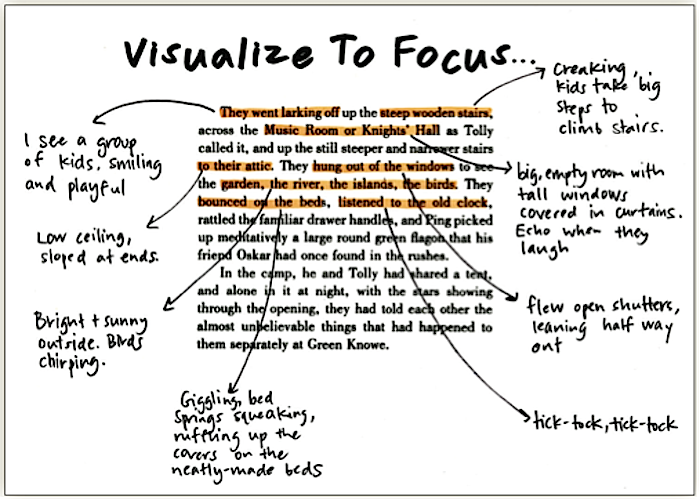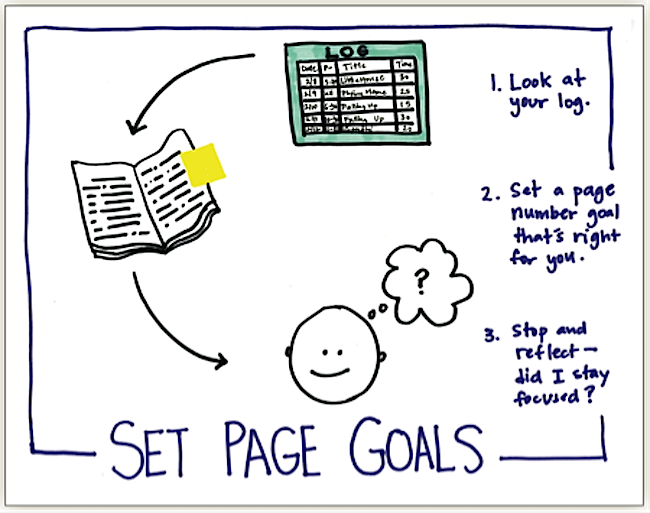She explains that strategies expand beyond comprehension into other
areas of reading such as decoding, reading with fluency, developing stamina and
engagement, writing about reading, and conversing about texts.
Strategies
Help a Learner Become Skilled
 For readers, Jennifer says that it’s helpful to go a step beyond saying “You should visualize when you
read” to saying, “When you are reading a story, imagine yourself to be in the
place. Use your senses to experience the world of the story. Describe what you
see, hear, smell, feel.” This is shown to the right. In this example you can see how a student might use his senses to think through a piece of text. For someone who isn’t yet able to visualize, this helps them see things much clearer and makes the visualization doable. Eventually you will want the students to demonstrate automaticity with visualization, but practicing the skill in this way will help build up to being independent.
For readers, Jennifer says that it’s helpful to go a step beyond saying “You should visualize when you
read” to saying, “When you are reading a story, imagine yourself to be in the
place. Use your senses to experience the world of the story. Describe what you
see, hear, smell, feel.” This is shown to the right. In this example you can see how a student might use his senses to think through a piece of text. For someone who isn’t yet able to visualize, this helps them see things much clearer and makes the visualization doable. Eventually you will want the students to demonstrate automaticity with visualization, but practicing the skill in this way will help build up to being independent.
Strategies
for More than Comprehension
Reading is complex and multi-faceted. Depending on the reader,
one of a number of goals may emerge as most important. Some students may
need support with one area of comprehension or another while others will need to work on being able to decode the print or read the text with fluency. Staying engaged and focused while reading may also be areas to address. Strategies can help here, too.
For example, instead of saying to a
reader “read for the whole 30 minutes without getting distracted,” we may
find it helpful to explain to them how to do that. The picture below explains to the reader how to stay engaged with reading. The teacher might say, “Set page goals in your book by
reflecting on your log. Mark your brief stops with sticky notes. When you read
and get to a sticky note, stop and think if you were focused or distracted.
Decide to read on, or re-read.”
Taking
it to the Classroom
Strategies are at the core of
everything you do when you are teaching reading. During whole class mini lessons, make sure to not just demonstrate but to also articulate
a strategy, making clear how a reader uses the strategy. When you pull your students into a small group, form the
group based on a strategy they could all use to improve their reading. Finally, when you meet with students one-on-one in conferences, do
more than just talk to them about their book; support them with their
individual reading goal by introducing and helping them to practice a strategy.
Be aware of who is doing most of the talking during a conference or a small group. If the teacher is doing most of the talking then the teacher is also doing most of the thinking. In The Reading Strategies Book, Jennifer give a list of prompts such as questions, directives, and compliments to keep the students active in thinking and learning.
Serravallo, Jennifer. "Expanding Our Approach to Reading Strategies."MiddleWeb. Heinemann, 24 Aug. 2016. Web. 01 Sept. 2016.

No comments:
Post a Comment